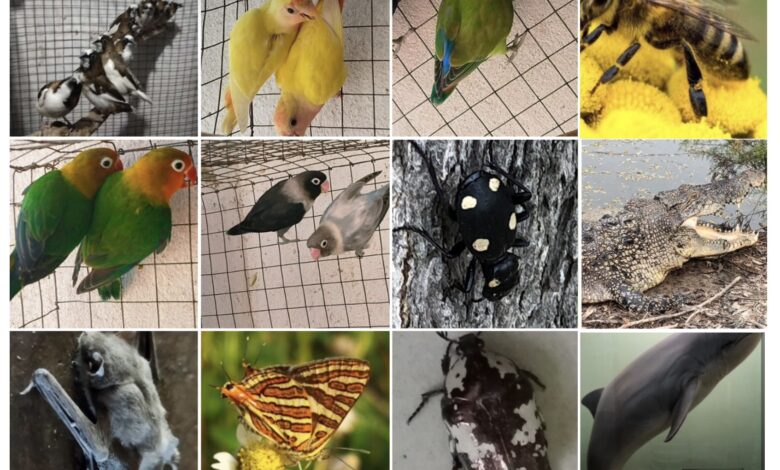Why is conservation of global biodiversity so important for us ?


Saikat Kumar Basu
Biodiversity, short for biological diversity, refers to the variety of life on Earth, including the diversity of species, ecosystems, and genetic variation within species. Biodiversity encompasses the multitude of living organisms, from microorganisms to plants, animals, and humans, and the complex interactions among them.
Biodiversity is critically important for several reasons:
- Ecosystem Stability:
- Biodiversity contributes to the stability and resilience of ecosystems. Diverse ecosystems are often better able to withstand environmental changes and disturbances, such as climate events and disease outbreaks.
- Ecosystem Services:
- Biodiversity provides numerous ecosystem services that benefit human well-being, including clean air and water, pollination of crops, pest control, and the regulation of climate and disease.
- Economic Value:
- Biodiversity supports economies through agriculture, forestry, fisheries, and tourism. Many industries depend on diverse ecosystems and species for their livelihoods.
- Genetic Resources:
- Biodiversity offers a vast genetic pool that is essential for breeding programs, crop improvement, and developing new medicines. It provides resilience against diseases and helps adapt to changing environmental conditions.
- Cultural and Aesthetic Value:
- Biodiversity is central to cultures, providing spiritual, aesthetic, and recreational value. It is often integral to cultural practices, art, and heritage.
- Scientific Understanding:
- Biodiversity is a source of scientific knowledge. Studying diverse species and ecosystems enhances our understanding of life on Earth, ecological processes, and adaptation strategies.
- Climate Regulation:
- Ecosystems play a role in regulating climate through processes like carbon sequestration. Healthy forests and wetlands, for example, help mitigate climate change by absorbing and storing carbon dioxide.
- Food Security:
- Biodiversity in agriculture and fisheries contributes to food security by providing a wide range of crops and species that can be used to adapt to changing dietary needs and environmental conditions.
- Medicine and Health:
- Many pharmaceuticals and medical treatments are derived from natural compounds found in various species. Biodiversity is a potential source of future medical breakthroughs.
- Ethical and Moral Responsibility:
- There is an ethical and moral imperative to protect and preserve the diversity of life on Earth. Human activities have led to species extinctions, and the responsibility to prevent further losses is widely recognized.
Biodiversity is not only vital for the functioning of ecosystems and the health of the planet but also for the well-being and survival of humanity. It is an interconnected web that supports our lives in numerous ways, making its conservation crucial for current and future generations.
Biodiversity, the variety of life on Earth, is indeed facing significant challenges. Some of the key challenges to biodiversity conservation include:
- Habitat Loss and Degradation:
- The conversion of natural habitats into agricultural land, urban areas, and infrastructure development is a major driver of biodiversity loss. Deforestation, wetland drainage, and land conversion have a profound impact on many species.
- Climate Change:
- Rising global temperatures and altered weather patterns can disrupt ecosystems and affect species’ distributions and migration patterns. Some species may struggle to adapt or face increased risks of extinction due to changing conditions.
- Pollution:
- Pollution from chemicals, plastic waste, and pollutants in the air, water, and soil can harm ecosystems and species. For example, ocean pollution affects marine life, and pesticides can harm insects critical for pollination.
- Overexploitation:
- Unsustainable hunting, fishing, and harvesting of wildlife and plants can lead to population declines and extinctions. This includes overfishing, poaching, and illegal wildlife trade.
- Invasive Species:
- Invasive non-native species can outcompete or prey on native species, disrupting ecosystems. These invasives often thrive due to human activities like trade and travel.
- Disease:
- The spread of diseases, including those facilitated by climate change and wildlife trade, can devastate populations. For example, diseases like chytridiomycosis have caused declines in amphibian populations.
- Fragmentation:
- Habitat fragmentation due to roads, urban development, and other barriers can isolate populations, reducing genetic diversity and making species more vulnerable to extinction.
- Lack of Awareness and Education:
- Public awareness and education about the value of biodiversity and the threats it faces are essential. Many people remain unaware of the importance of conserving diverse species and ecosystems.
- Lack of Legal Protections:
- Inadequate or poorly enforced environmental laws can fail to protect species and habitats from harmful activities.
- Economic Pressures:
- Economic interests, such as agriculture, mining, and fisheries, often clash with conservation goals, making it challenging to strike a balance between human development and biodiversity conservation.
- Globalization:
- The globalization of trade and travel can facilitate the spread of invasive species and diseases, increasing the risks to local biodiversity.
- Limited Resources for Conservation:
- Many conservation efforts are underfunded, limiting the ability to effectively protect and restore ecosystems and species.
Conserving biodiversity requires a multi-faceted approach, including habitat protection, sustainable resource management, international cooperation, and public engagement. It’s crucial to address these challenges collectively to safeguard the planet’s biodiversity for future generations.






